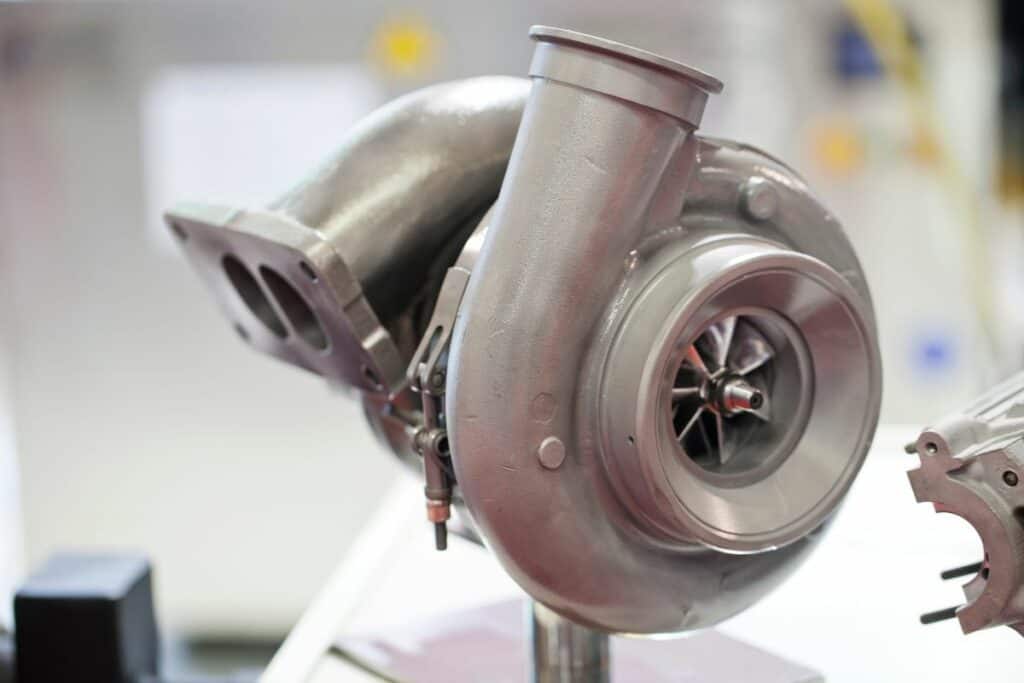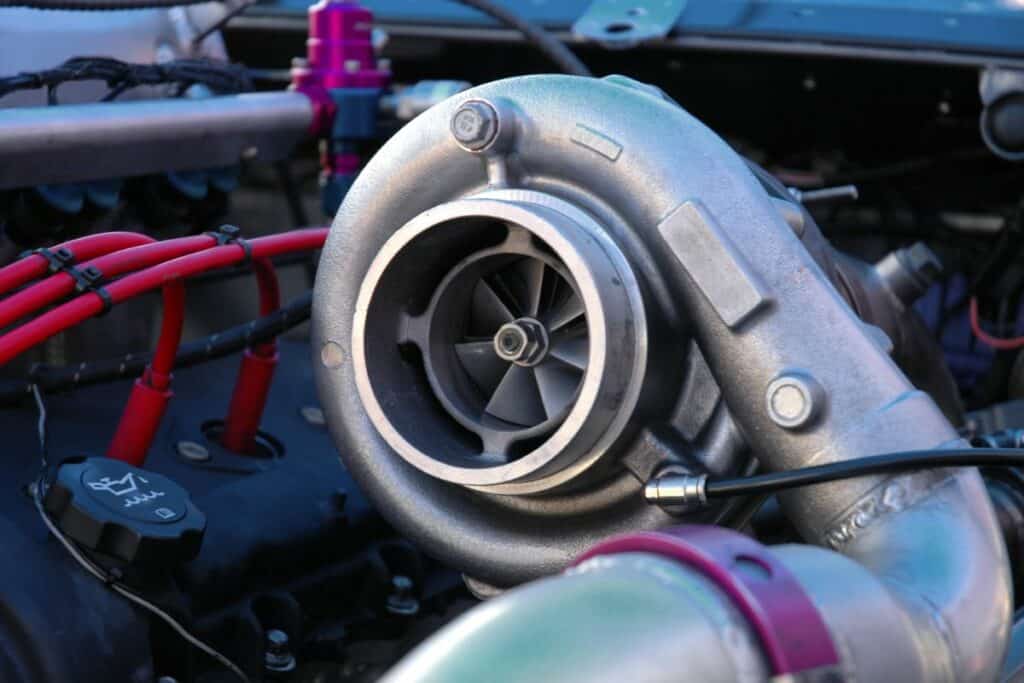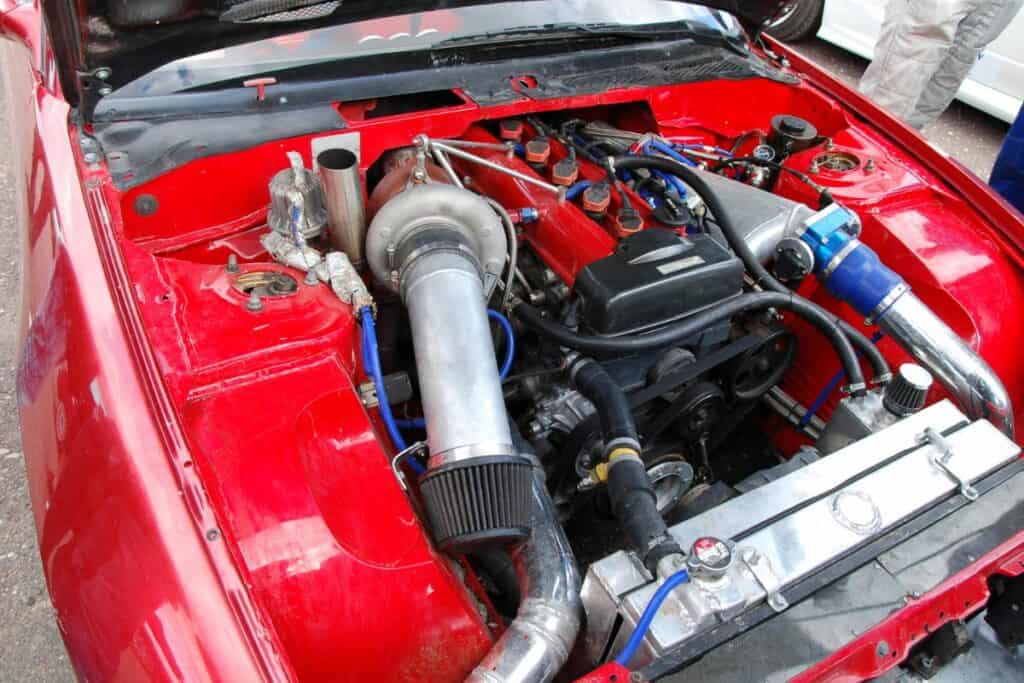Adding a turbo is a popular way to increase your engine’s output power. A turbo allows your engine to burn more fuel by forcing more air into the combustion chamber, resulting in a higher horsepower rating. But how much horsepower does a turbo realistically add to an engine?

With my experience in the automotive industry, I’ll delve into the details of how much horsepower a turbo adds. I’ll also explore the factors that can affect the boost in power. Whether you’re a car enthusiast looking to boost your ride or simply curious about the inner workings of turbos, this article is for you.
Table of Contents
How Much Horsepower Does a Turbo Add?
Generally, a turbo can add 70 to 150 horsepower to an engine, depending on the specific installation. Some engines are designed specifically to work with a turbo and can be built to handle the additional power. Other engines may be unable to withstand the extra strain and may require modifications to handle the increased power.
A turbo is an engine part that makes an internal combustion engine more powerful by adding more air. This lets the engine burn more fuel and make more power.
How Much Horsepower Does a Single Turbo Add?
It is difficult to accurately say how much horsepower a single turbo will add to an engine, as many variables can affect the performance of a turbo system. Some of these variables include the turbo’s size and efficiency, the engine’s size, the type of fuel being used, and the vehicle’s overall condition.
Depending on these variables, a single turbo can boost an engine’s horsepower by 10% to 50%, at around 70-150 horsepower. But it’s important to remember that adding a turbo is challenging and requires many engine changes to be efficient.
How Much Horsepower Does a Twin Turbo Add?
A double turbo setup might give an engine a little more horsepower than a single turbo, but the amount of horsepower a twin-turbo adds depends on the design and size of the turbos and the engine they are being put on. A twin-turbo adds around 100-250 horsepower to your engine.
It’s worth noting that a double turbo setup will generally be more efficient at lower RPMs. It can help reduce turbo lag, which refers to the delay in boost pressure and increased horsepower that occurs when the turbo does not provide enough boost.
Turbo lag can be an issue with single turbo systems, especially at low RPMs when the turbo is not spinning fast enough to generate a significant boost. This can be fixed with a double turbo setup, which has two smaller turbos that can spin up faster at low RPMs and thus give a boost at lower RPMs.
Advantages and Disadvantages: While Adding a Turbocharger
There are several advantages and disadvantages to adding a turbocharger to an engine:

Advantages
Here below I’ve listed the main advantages of installing a turbocharger:
- Increased power
A turbocharger works by spinning a turbine connected to a compressor using exhaust gases. The compressor forces more air into the engine’s combustion chamber, allowing it to burn more fuel and generate more power. This can lead to a significant increase in acceleration and top speed.
- Improved fuel economy
Since a turbocharged engine can generate more power using less fuel, it can be more fuel efficient than a naturally aspirated engine. This is because the engine can operate at a higher load with the same amount of fuel or generate the same power output using less fuel.
- Compact size
Turbos are relatively small and lightweight compared to other types of forced induction systems, such as superchargers. This makes them well-suited for use in smaller vehicles where space is at a premium.
- Quick boost:
Turbochargers can provide a quick boost of power when needed, such as when overtaking another vehicle or climbing a steep hill. This is because the turbo can quickly increase the amount of air being forced into the engine, allowing it to generate more power on demand.
- Enhanced durability
Turbocharged engines can often be more durable than naturally aspirated engines, as they can operate at lower RPMs while still producing the same power output. This is because the turbo can increase the amount of air being forced into the engine, allowing it to operate at a higher load without having to rev the engine as high. This can lead to longer engine life, as the engine is not being pushed as hard.
Disadvantages
Installing a turbocharger also brings some disadvantages, as listed below:
- Cost:
The cost of purchasing and installing a turbo can vary significantly depending on the specific type of turbo and the engine it is being installed on. In general, adding a turbo to an engine can be a significant financial investment.
- Complexity:
Turbocharged engines have more components than naturally aspirated engines, including the turbo itself, the intercooler (if applicable), and various pipings and fittings. This can make troubleshooting and repairs more complex and time-consuming, which can increase the overall cost.
- Heat:
Turbos generate a lot of heat as they compress the air being drawn into the engine. This can lead to higher coolant temperatures and increased wear on engine components. Also, the high temperatures made by the turbo can shorten the life of some engine parts, like seals and gaskets.
- Lag:
“Turbo lag” refers to the delay between when the driver hits the accelerator and when the turbo kicks in and begins boosting the engine. This can lead to a feeling of sluggishness, especially at low speeds.
- Weight and space:
Turbos take up physical space in the engine compartment, which can make them difficult to install in some vehicles and may require modifications to the engine bay. In addition, the turbo and related components (such as the intercooler and piping) can add additional weight to the vehicle.
- Increased engine wear:
The increased combustion chamber pressures and air flow rates associated with turbocharged engines can lead to increased wear on engine components. The higher pressures can strain the pistons and cylinders more, potentially leading to increased wear and the need for more frequent repairs or replacements.
- Noise:
Turbocharged engines can produce more noise than naturally aspirated engines due to the added complexity of the turbo and related components. The turbo itself can generate noise as it spins at high speeds, and the added pipings and fittings can also contribute to the overall noise level. This can make the vehicle louder to operate, which may be undesirable for some drivers.
What Else Do You Need to Do a Car When Adding a Turbo?

There are a few things that you should consider when adding a turbo to a car. Here are some key points to consider:
1. Engine modifications
If you are adding a turbo to a classic aspirated engine, you may need to make some engine modifications to support the additional power. This could include upgrading the fuel system to support higher boost levels, adding forged pistons or connecting rods to strengthen the bottom end, or upgrading the engine’s internals to handle the increased stress.
2. Exhaust modifications
The exhaust system is responsible for evacuating exhaust gases from the engine. It needs to be able to handle the increased airflow that comes with a turbocharged engine. This could include adding a larger exhaust manifold to support the turbo, a downpipe to connect the turbo to the rest of the exhaust system, and a muffler to reduce noise.
3. Intercooler
A turbocharged engine generates a lot of heat as it compresses the air being forced into the engine, which can lead to engine knocking. An intercooler helps to cool the intake air and reduce the risk of engine knock by dissipating heat as the air passes through it.
4. ECU tuning
The electronic control unit (ECU) is in charge of the engine’s fuel and ignition maps. It must be reprogrammed to take advantage of the turbo’s increased airflow and fuel delivery. This is called “tuning.” This involves making changes to the fuel and ignition maps to make the engine run best for the way your car is set up.
5. Boost control
To regulate the amount of boost being produced by the turbo, you will need to install a boost control system. This could include a wastegate, a blow-off valve, or both. The wastegate is used to regulate the amount of exhaust gas that flows through the turbo, while the blow-off valve is used to vent excess boost pressure when the throttle is closed.
6. Support modifications
Depending on your car’s specific needs, you may need to make some additional modifications to support the turbo. This could include upgrading the suspension and brakes to handle the increased weight and performance. You can also add additional gauges to monitor the turbo’s performance.
7. Other considerations
Depending on the turbo size and the power output you want to achieve, you may need to upgrade the clutch and transmission to handle the increased torque. You may also want to add oil and coolant lines to the turbo to keep it lubricated and cool. These lines will need to be properly plumbed into the engine’s existing systems.
How Much Horsepower Does a Turbo Add in Different Engines?

The amount of power a turbo can add depends on the engine’s size and the turbo’s boost pressure. In general, a turbo will significantly increase the power output of an engine.
How Much HP Does a Turbo Add to an I4?
A turbo’s ability to increase the horsepower of an I4 (four cylinders inline) engine depends on a number of variables, including the turbo’s size and efficiency, the overall engine design, and the driving environment. A turbo can generally add 70 to 150 horsepower to an I4 engine.
How Much HP Does a Turbo Add to a V6?
The amount of HP a turbo adds to a V6 engine is determined by its size, the engine’s design, and the turbo’s build quality. In general, a turbo kit can increase the horsepower of a V6 engine by 70 to 150 horsepower.
How Much HP Does a Turbo Add to a V8?
Many variables affect how much horsepower a turbo can add to a No products found.. A turbo can generally add 50 to more than 150 horsepower to a V8 engine. However, it is important to note that adding a turbo to a V8 engine is a complex process that requires careful planning and execution to achieve the desired result.
How Much HP Does a Turbo Add to a 350z?
It is difficult to specify how much horsepower a turbo will add to a Nissan 350Z , as it will depend on many factors. In general, adding a turbo to a naturally aspirated engine can increase horsepower by 50% to 100%, but this range can be very wide. For example, a well-designed and properly installed turbo kit on a 350Z with a healthy engine might be able to increase horsepower by as much as 250 to 300 horsepower. On the other hand, a poorly designed or poorly installed kit might not provide any noticeable increase in horsepower.
How Much HP Does a Turbo Add to a Diesel Engine?
A turbo can generally add 50 to over 150 horsepower to a diesel engine, with the average being around 100 horsepower. It’s important to note that adding a turbo to a diesel engine is not a simple task and requires the engine to be modified to accommodate the extra power. Additionally, the engine must be tuned properly to get the most out of the turbo.
How Much Horsepower Does a Turbo Add to a 4-Cylinder Engine?
A 4-cylinder engine’s ability to gain horsepower from a turbo depends on several variables, including the turbo’s size, the engine’s size, the installation’s quality, and the engine’s tuning. In general, a turbo can increase the horsepower of a 4-cylinder engine by 70 to 150 horsepower.
It’s essential to keep in mind that these are all rough estimates. How much your horsepower goes up will depend on your engine and the turbo kit you put on it. If you want a more accurate estimate of how much horsepower a turbo will add to your engine, consulting with a mechanic or performance shop is best. They will be able to take into account the specific details of your engine and the turbo kit you’re considering and give you a more accurate estimate of the horsepower increase you can expect.
Check our article on Top 5 Best Exhaust For 5.9 Cummins
FAQ
I’ve listed the most frequently asked questions about turbos:
At what RPM do turbos kick in?
Most turbos start to produce a boost between 1,500 and 3,000 RPM, and they keep doing so until the engine reaches its maximum RPM. The specific RPM at which a turbo kicks in will depend on the design of the turbo and the engine it is installed on.
Are turbos bad for your engine?
A turbo might cause an engine to wear out faster, but this can be kept to a minimum with good maintenance and careful driving. In general, turbocharged engines can be just as reliable as non-turbocharged engines if they are well-maintained.
Does a twin-turbo make a car faster?
A twin-turbo system can potentially make a car faster in short bursts because it allows the engine to produce more power at lower RPMs. This is because the twin-turbo system uses two smaller turbos instead of one larger one, which can reduce lag and allow the engine to produce more power at lower RPMs.
What sort of turbo should you install?
It depends on what you want to achieve with your turbo installation. If you want to increase the performance of your vehicle, you should choose a turbo that is appropriately sized for your engine and has a compressor map that is suitable for your desired power level and intended use.
Conclusion:
A turbo can add significant horsepower to a vehicle, but the amount of horsepower gained will depend on various factors, such as the size and efficiency of the turbo, the engine it is being installed on, and the overall quality of the installation. It is difficult to specify how much horsepower a turbo will add, as it will vary widely depending on these and other factors. However, it is safe to say that a properly installed and calibrated turbo system can significantly increase the horsepower output of a vehicle.
My tip if you are considering adding a turbo to your vehicle: Be sure to size the turbo for your engine properly. Using a turbo that is too small may not provide the desired horsepower increase while using a turbo that is too large can lead to increased lag and potentially cause damage to the engine. It is important to do proper research and consult with experts to ensure that you choose the right size turbo for your specific setup.
